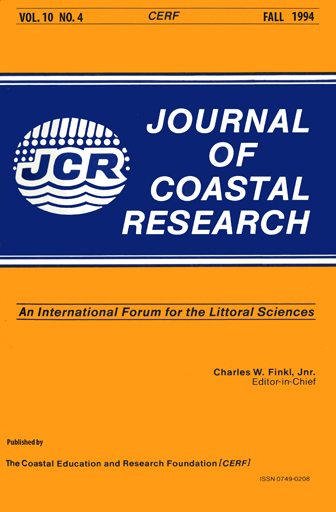Predicting the Effect of Sea-level Rise on Mangroves in Northwestern Australia
Keywords:
Mangroves, sea-level rise, Northwestern Australia, tidal flatsAbstract
The patterns of mangrove distribution in tropical northwestern Australia are related to coastal dynamics, habitats and salinity. They also respond to the sedimentology of the tidal flats that back them, to coastal (sheet) erosion, and to the effects of some industrial impacts. These patterns provide information useful in predicting the variable effects of sea-level rise on mangroves. For instance, fundamental changes to soil regimes and salinity can be expected as tidal flat surfaces and groundwaters sedimentologically and hydrologically adjust to new levels of wave base and frequency of inundation as sea-level rises. Since mangrove assemblages and their zones are closely related to shore profile, soils, habitat stratigraphy and salinity fields, any change in these can lead to alteration of the structure and composition of mangrove systems.
The mangrove response to a rising sea level will depend on the environmental setting of the mangrove system. This includes the relative geomorphic and sedimentologic homogeneity of the coast, its tidal range, its stability, and the history of Holocene sea levels in regard to development of coastal gradients and the climatic setting which determines the variety of species that will respond to this Holocene sea level rise and the type of reproduction the mangroves will utilise to keep pace with encroaching seas. A dichotomous key is presented which suggests that the response of mangrove coasts to a rising sea level will be quite varied from coastal sector to sector and even from site to site within 8 single coastal sector and climate setting.
Some case studies illustrate the probable effect of rising sea level on mangrove systems in Western Australia. The macrotidal shores of King Sound, a relatively simple coast in terms of habitat and stratigraphy, is eroding naturally by creek and cliff erosion and by sheet erosion progressing at 1-3 cm/yr. This erosion specifically simulates the effects of a rising sea. With coastal retreat, the mangroves are migrating landwards, generally keeping pace with the- retreat. Mangroves colonise by seedling recruitment on the new substrates that become available through the processes of erosion, inundation, and dilution of hypersaline groundwater of the salt flats. As erosion and progressive dilution of hypersalinity proceeds, each zone within the mangrove belt displaces the adjoining one. Thus, sea-level rise in a system like King Sound would most likely result in the migration of mangroves, with similar composition and structure, into habitats made available by increased inundation. In arid zones, however, where mangrove population is maintained by vegetative reproduction, sheet erosion of tidal flats also causes landward migration of zones, but the individual zones keeps pace with a relative rising sea level by vegetative processes. Elsewhere in NW Australia, various mangroves assemblages with different composition, structure and population maintenance have developed along highly indented (ria) shores, in 8 heterogeneous suite of habitats that have evolved over the late Holocene. These habitats are defined by their geomorphic setting, sedimentologic processes, stratigraphic evolution, and ground water dynamics, and each is related to a specific height in relationship to sea level. A sea-level rise would inundate the various geomorphic/habitat systems, dislocating their suite in relation to the formative sea level. It is likely that these mangroves would not adjust as rapidly as the more homogeneous systems, and hence be disrupted.


